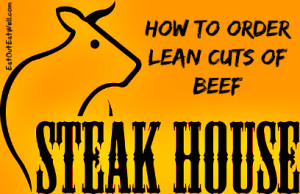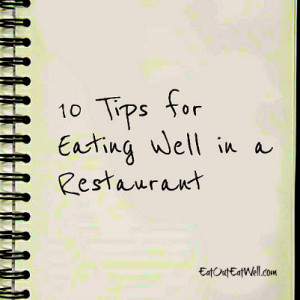 Do you love beef? It can be a fine choice as long as it’s a good cut, a reasonably sized portion, and not an everyday occurrence. Here are some tips for choosing the least fatty cuts of beef. Beware the gargantuan portions that many steakhouses dish up.
Do you love beef? It can be a fine choice as long as it’s a good cut, a reasonably sized portion, and not an everyday occurrence. Here are some tips for choosing the least fatty cuts of beef. Beware the gargantuan portions that many steakhouses dish up.
What are Lean and Extra-lean Cuts of Beef?
According to the USDA:
- a 3.5 oz serving (about 100 grams) of a lean cut of beef has less than:
- 10 grams total fat
- 4.5 grams saturated fat
- 95 milligrams cholesterol
- a 3.5 ounce serving (about 100 grams) of extra-lean cut of beef has less than:
- 5 grams total fat
- 2 grams saturated fat
- 95 milligrams cholesterol
- Twenty-nine cuts of beef qualify as lean or extra lean. The cuts that are considered extra lean are:
- Eye of round roast or steak
- Sirloin tip side steak
- Top round roast and steak
- Bottom round roast and steak
- Top sirloin steak
Some Calorie Saving Beef Tips
- “Round” or “loin” are what to look for when you want the leanest cut of meat (for instance: top round, sirloin, top loin, tenderloin, eye round).
- “Cut” refers to the part of the animal the “cut” of meat has been taken from. Leaner cuts usually come from the hip or hindquarter.
- If you don’t stick to extra-lean cuts like top round and top sirloin, go for lean cuts like strip, tenderloin, T-bone, and shoulder.
- Ribeye and skirt steaks are usually marbled – which means there’s fat throughout the meat.
- Your safest bet is to ask for smaller portions of leaner cuts of beef.




